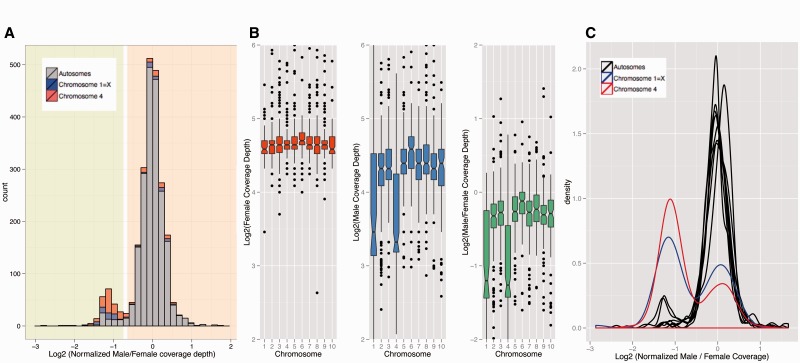Fig. 1.—
Male and female genomic coverage analyses to identify sex chromosomes in Xenos. (A) Histogram of Log2 male/female coverage. Scaffolds that map to chromosomes 1 and 4 of T. castaneum are shown in blue and red, respectively. The bimodal distribution in coverage suggests that a substantial fraction of the genome is sex-linked in Xenos, with the peak with reduced male/female coverage corresponding to scaffolds that are X-linked in X. vesparum. (B) Boxplot of log2 of coverage in female (in red), male (in blue), and male/female (in green). Overall, there is a drop in male/female coverage for scaffolds that map to chromosomes 1 and 4 in Tribolium, suggesting that these chromosomal elements are X-linked in X. vesparum. (C) Density plot of log2 normalized male/female coverage. Normalization was done by dividing the coverage of scaffolds in each chromosome by the median of the coverage of all scaffolds in chromosomes other than chromosome 1 and chromosome 4. Distributions of chromosome 1 and chromosome 4 are different from that of other chromosomes. The bimodal shape suggests that there have been some rearrangements in the X. vesparum genome compared with the genome of T. castaneum.

